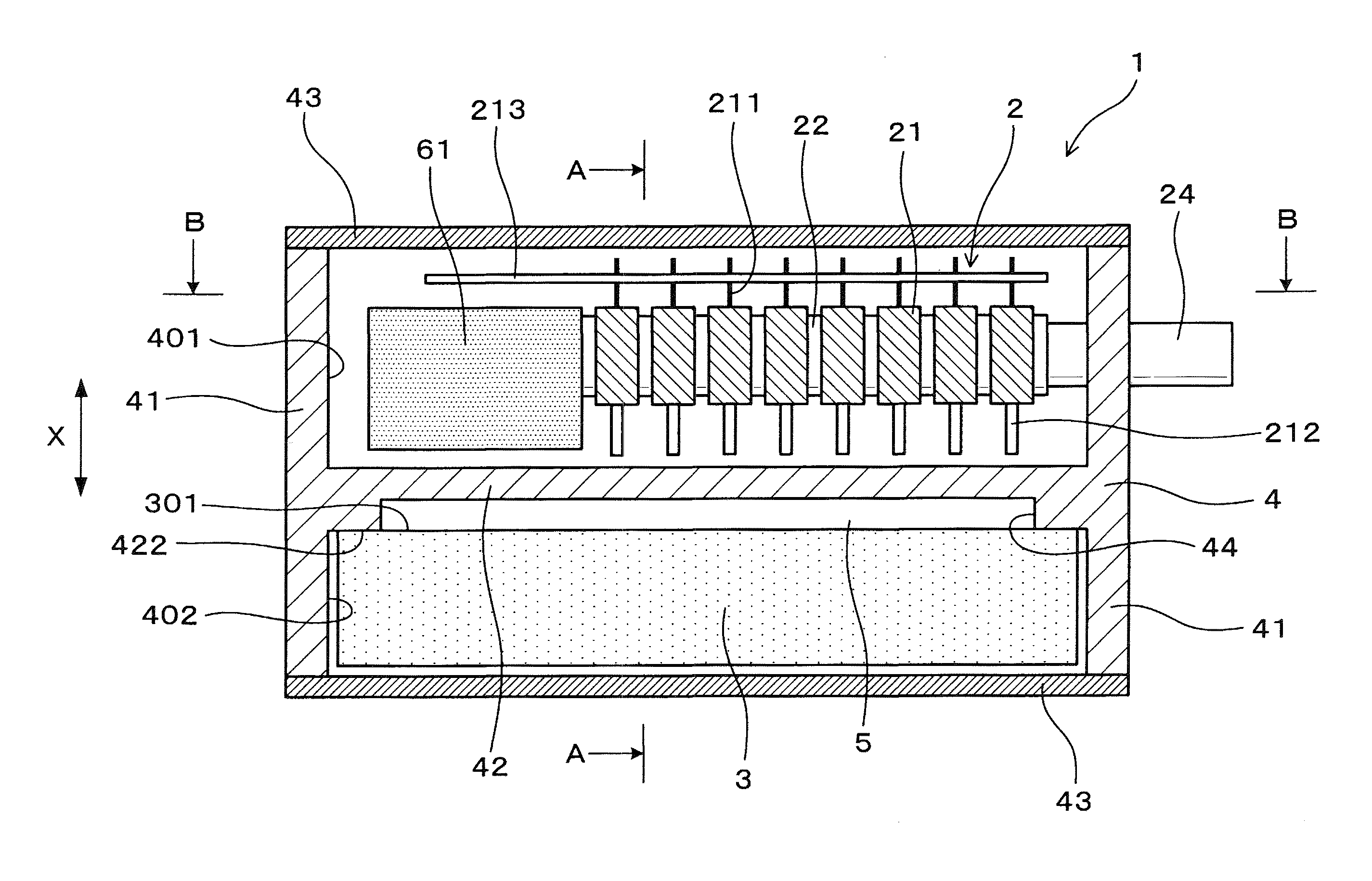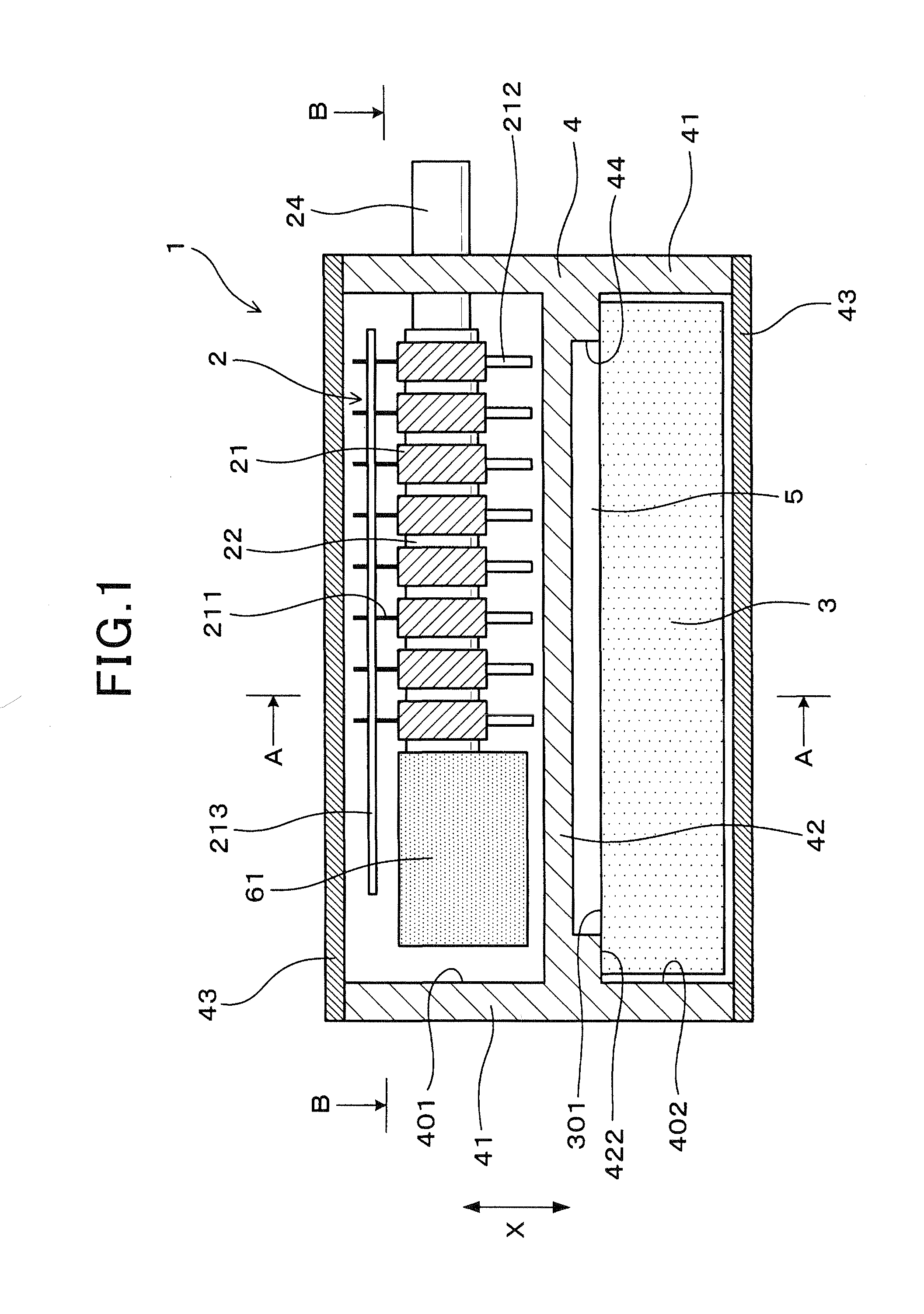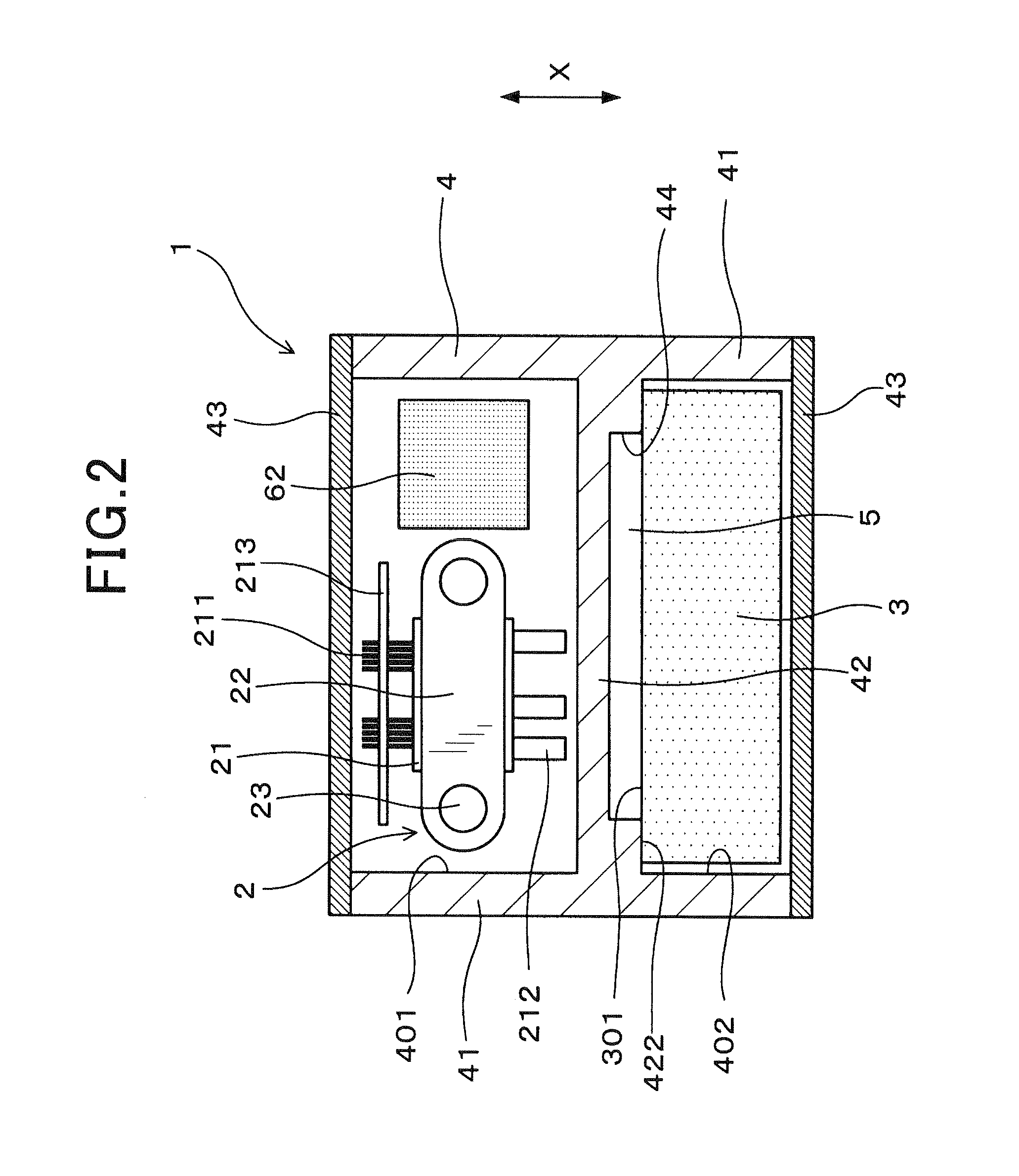Electric power conversion apparatus
- Summary
- Abstract
- Description
- Claims
- Application Information
AI Technical Summary
Benefits of technology
Problems solved by technology
Method used
Image
Examples
first embodiment
[First Embodiment]
[0049]Referring to FIGS. 1-3, an electric power conversion apparatus 1 according to a first embodiment includes first and second electric power conversion devices 2 and 3 that are arranged to overlap each other in the vertical direction X, and a housing 4 that receives both the first and second electric power conversion devices 2 and 3 therein. The housing 4 has a partition wall 42 that is formed to partition the housing 4 between the first and second electric power conversion devices 2 and 3. In other words, the partition wall 42 extends between the first and second electric power conversion devices 2 and 3 to partition the housing 4 into two parts in which the first and second electric power conversion devices 2 and 3 are respectively received. Further, the partition wall 42 has a coolant passage 5 formed therein.
[0050]Specifically, in the present embodiment, as shown in FIGS. 1 and 2, the housing 4 has four side walls 41 each extending vertically and the partiti...
second embodiment
[Second Embodiment]
[0088]This embodiment illustrates an electric power conversion apparatus 1 which has almost the same configuration as the electric power conversion apparatus 1 according to the first embodiment; accordingly, only the differences therebetween will be described hereinafter.
[0089]In the first embodiment, the recess 44 formed in the lower surface 422 of the partition wall 42 of the housing 4, which makes up the coolant passage 5, is covered by the converter 3 that is disposed in contact with the lower surface 422 of the partition wall 42.
[0090]In comparison, in the present embodiment, as shown in FIG. 4, the recess 44 formed in the lower surface 422 of the partition wall 42 of the housing 4 is covered by a plate-shaped lid member 45 that is disposed in contact with the lower surface 422 of the partition wall 42. Consequently, an upper surface 451 of the lid member 45 faces the coolant passage 5 and is thus directly exposed to the coolant flowing through the coolant pa...
third embodiment
[Third Embodiment]
[0095]This embodiment illustrates an electric power conversion apparatus 1 which has almost the same configuration as the electric power conversion apparatus 1 according to the first embodiment; accordingly, only the differences therebetween will be described hereinafter.
[0096]In the first embodiment, the partition wall 42 of the housing 4 has only the single coolant passage 5 formed therein (see FIG. 2).
[0097]In comparison, in the present embodiment, as shown in FIG. 5, the partition wall 42 of the housing 4 has a pair of first and second coolant passages 5 formed therein.
[0098]The first coolant passage 5 is identical to the coolant passage 5 in the first embodiment. That is, the first coolant passage 5 is made up of a recess 44 which is formed in the lower surface 422 of the partition wall 42 and covered by the converter 3 that is disposed in contact with the lower end surface 422.
[0099]On the other hand, the second coolant passage 5 is made up of a recess 46 whi...
PUM
 Login to View More
Login to View More Abstract
Description
Claims
Application Information
 Login to View More
Login to View More - R&D
- Intellectual Property
- Life Sciences
- Materials
- Tech Scout
- Unparalleled Data Quality
- Higher Quality Content
- 60% Fewer Hallucinations
Browse by: Latest US Patents, China's latest patents, Technical Efficacy Thesaurus, Application Domain, Technology Topic, Popular Technical Reports.
© 2025 PatSnap. All rights reserved.Legal|Privacy policy|Modern Slavery Act Transparency Statement|Sitemap|About US| Contact US: help@patsnap.com



